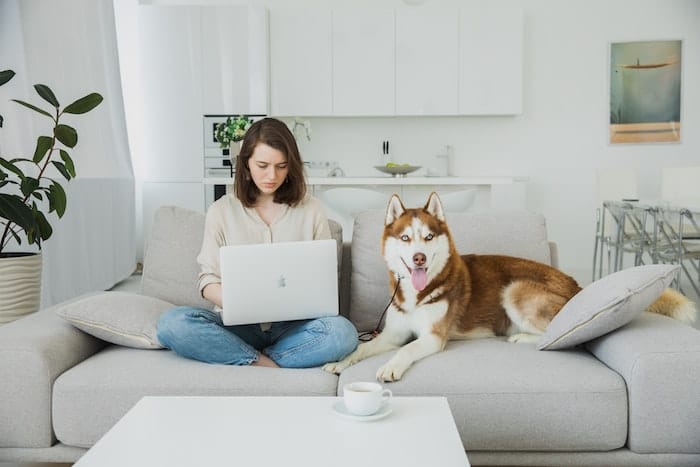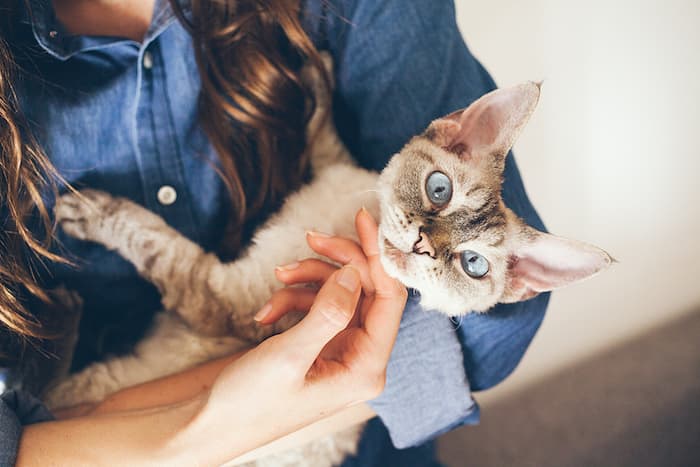There are so many things to consider when moving to a new house: there’s the financial stress, the um-ing and ah-ing over which possessions to take with you and which to move on, the actual act of moving itself. In amongst the chaos, it’s easy to forget our furry friends, but they’re feeling the stress too! They need to be at the top of our priority lists when moving, and today we’ll talk you through just what to consider.
Planning Your Move
The key to a successful move with a pet is careful planning. Start by finding a new home that is pet-friendly, keeping in mind the space, neighborhood, and nearby amenities like parks. Once you’ve secured a suitable place, it’s time to create a moving timeline. Pets thrive on routine, so maintaining their daily schedule as closely as possible can help reduce stress.

Vet Visit and Records
Make sure you have all of your vet records on hand – it could potentially be an issue if you lose them during the chaos! It’s also worth visiting the vet in the weeks leading up to the move. This helps you ensure your pet is in good health and that their vaccinations, ID tags, and microchips are up-to-date. You might also need additional vaccinations or health certificates if you’re moving interstate or abroad, so remember to ask your vet!
A vet working with pet health product company Zoetis has recommended a list of other reasons why staying on top of those vet records is helpful in the long run!
Packing and Preparing Your Pet
The sight of moving boxes and the disarray in your home can cause confusion and anxiety in your pet – especially cats. To minimize this, designate a quiet and secure area in your home as a “pet sanctuary.” Pack their favorite toys, bedding, and familiar items separately, and keep them in this space as long as possible during the move. The scent of their familiar belongings will comfort them amidst the chaos.
As the moving day approaches, make a checklist of all the pet essentials you’ll need in a separate bag. This should include food, water, medications, leashes, and any other items that your pet relies on daily. Also, ensure you have enough pet carriers for your animals, as they will be essential for safe transportation.

Pet Safety and Security
On moving day, it’s crucial to prioritize the safety and comfort of your pets. Consider leaving your pets with a trusted friend or a pet-sitter on moving day if possible, as the hustle and bustle can be stressful for them. If this isn’t an option, keep them secure in their carriers or in the designated pet sanctuary to prevent any mishaps.
During the actual transportation, secure your pets in carriers or with proper restraints in the car. The RSPCA has provided a helpful resource for ensuring your pet is safe during transportation. Always use a leash when walking your dog outside the vehicle, and make frequent stops for bathroom breaks and short walks. Avoid leaving pets in a parked car, even with the windows cracked, as the temperature inside can become dangerously hot or cold very quickly.
Settling In
When you first enter the house, take your pet to their designated sanctuary to help them acclimate to the new environment gradually. Spend time with them, reassuring them with affection and familiar toys.
In the following days, slowly introduce your pet to their new surroundings. Start with one room and gradually expand their territory as they become more comfortable. Keep an eye on their behavior to gauge their stress level, and be patient if they seem hesitant or anxious. Familiar routines, such as regular feeding and playtime, will help them settle in.
During a move and afterwards, you should also consider insuring your pet in case something goes wrong. An insurance comparison site found that almost three quarters of pet owners did not have their pet insured, leaving owners in the lurch should something happen. This is especially pertinent during a move when anything can go wrong.
It’s also essential to pet-proof your new home. Check for potential hazards like exposed wires, toxic plants, and accessible cleaning supplies. Make sure that any fences or gates in your yard are secure to prevent your pet from wandering off in an unfamiliar area.
Moving to a new house can be a challenging experience for both you and your pet. Remember, your pet relies on you for love, support, and a sense of security, and by taking these steps to care for them during a move, you’re ensuring that they continue to thrive in their new environment.
